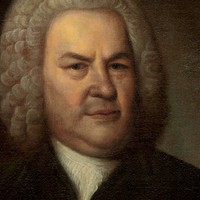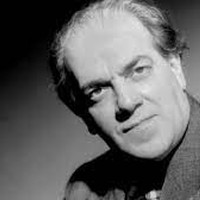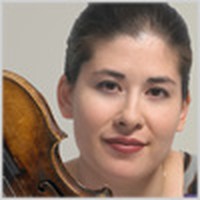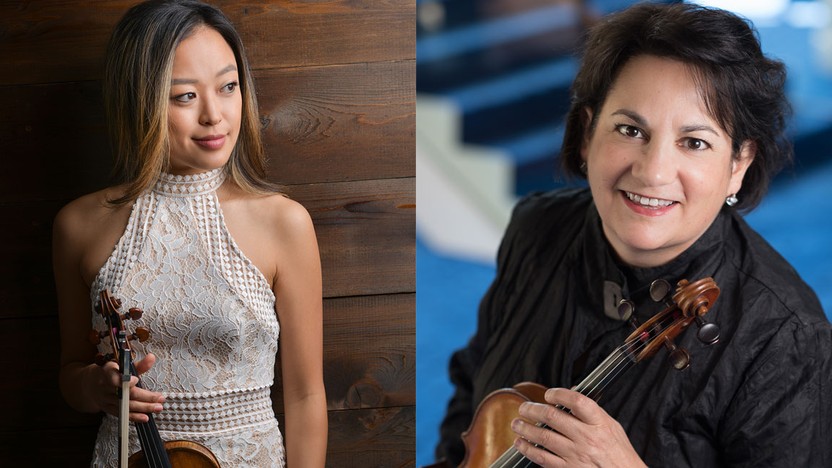Details
 Listen to Audio
Listen to Audio
Johann Sebastian Bach
Orchestral Suite No. 1 in C
From 1723 until his death in 1750, Johann Sebastian Bach held the demanding position of Thomaskantor, directing music for the principal churches of Leipzig and training the young choristers under his care. Somehow Bach also found the time to direct the Collegium Musicum, an amateur ensemble founded by Georg Philipp Telemann back when he was a student in Leipzig. With most concerts held at a coffee house, the Collegium Musicum provided Bach a space where he could present secular music not fit for church, including the four surviving Orchestral Suites inspired by French dance music.
Bach probably composed the Orchestral Suite No. 1 during his early years in Leipzig, perhaps in 1725. Suites in the French style had become fashionable in Germany, where such a work would have been described as an Ouverture (to use the French spelling), taking the name from the substantial opening movement. As was customary, this one begins with slow dotted rhythms that establish an air of gravitas, linked to a fast fugal section.
The dances that constitute the remainder of the suite each adopt the usual binary structure, consisting of two repeated sections. All but the Courante and Forlane come in sets of linked pairs organized in a da capo format, meaning that the first dance returns for a final pass after the second concludes. In the Forlane — the only movement with that title in Bach’s surviving output — the pastoral oboe melody, droning bass and slurred accompaniment make for a memorable effect. Instead of ending with a typical gigue, the suite closes with a pair of Passepieds, another rare form found only four times in Bach’s music. This fast spin on a minuet reuses the same melody for the second part, dropping the tune to a lower octave and adding a dizzying counter-line from the oboes.
Aaron Grad ©2024

Heitor Villa-Lobos
Bachianas brasileiras No. 5 (arr. by Posthuma)
Heitor Villa-Lobos blended the sophistication of Western concert music with the sound and spirit of his native Brazil. He was already navigating two musical worlds as a child, learning the cello to satisfy his father while also picking up the guitar and absorbing street music like the samba. Reflecting his dual footholds in Brazilian and European musical traditions, he composed a series of nine works titled Bachianas Brasilieras, in homage to Johann Sebastian Bach and his homeland.
The Bachianas Brasilieras No. 5 consists of two movements; the first, from 1938, is far and away the composer’s most popular composition. That immortal Aria melds the long, winding melodies of Bach with guitar-like plucking in the tradition of Brazilian popular music. The melody appears first in the pairing of wordless soprano and cello, and then the lead cellist recasts the theme alone. A recitative-like contrasting section introduces a text by Ruth Valadares Corrêa (who was also the soprano in the first performance), painting a languid picture of early evening with drifting clouds and a rising moon, and then the soprano hums the main melody one last time.
The second movement is a fast danse, with its subtitle Martelo using the term for a punctuated (literally “hammered”) style of articulation. The lyrics by Brazilian poet Manuel Bandeira pay tribute to the birds of Northeast Brazil.
Aaron Grad ©2024

Maria Kaneko Millar
Bach in Ireland
Maria Kaneko Millar, a violinist born in Canada and trained at Juilliard, has traveled the world as a dancing fiddler in Riverdance productions and with Sonic Escape, her own genre-blurring duo with her flutist husband. Her creation Bach in Ireland, scored for flute, violin and cello, weaves together authentic Irish fiddle tunes with Bach’s own stylized dance music. The Jig adapts two traditional Irish tunes: “Off She Goes” and “Contentment is Wealth.” The Slip Jig is another Irish staple (built with three triplet beats per measure instead of the jig’s two triplet beats), and this one quotes the melodies “Last Night’s Fun” and “Rocky Road to Dublin.” The Reel (a dance with four even beats per measure) borrows from “The Youngest Daughter.”
Aaron Grad ©2024
Paul McCartney
Penny Lane (arr. by Posthuma)
“Penny Lane," released in February 1967 as a double A-side single with “Strawberry Fields Forever,” is emblematic of the Beatles’ turn towards more experimental, psychedelic, and avant-garde songwriting and was written in the same months as material that became Sgt. Pepper’s Lonely Hearts Club Band. The nostalgic, yet enigmatic, lyrics about everyday life in Liverpool take on a surreal quality as the music shifts between key centers in surprising ways. The most iconic feature of the song is the extended neo-Baroque solo for piccolo trumpet, which plays an octave higher than other trumpets. After hearing the stratospheric trumpet playing in Johann Sebastian Bach’s Brandenburg Concerto No. 2 on a BBC television broadcast, Paul McCartney had found the sound he was looking for in the instrumental break and hired trumpeter David Mason to record the famous solo, which Beatles’ writer Mark Hertsgaard describes as “rising out of the din like a bird taking wing at dawn. The sense of freedom, energy, and sheer happiness is glorious.” This arrangement for chamber orchestra remains faithful to the source material by utilizing some of the other instruments found in the original such as piccolo, flute and oboe.
Jonathan Posthuma ©2024
 Watch Video
Watch Video
Johann Sebastian Bach
Concerto for Two Violins
Johann Sebastian Bach probably composed his Concerto for Two Violins around 1730, not long after he agreed to lead Leipzig’s Collegium Musicum. This talented amateur group, founded in 1702 by a young Georg Philipp Telemann, provided an outlet for Bach to play instrumental music in a sociable atmosphere, away from the weekly grind of his church duties. Many of the works that Bach brought to the Collegium were arrangements of works from an earlier period when he worked a secular job in Cöthen, so it is possible that the Double Violin Concerto had its origins in some earlier source material.
Along with Bach’s two surviving Violin Concertos (also prepared for the Collegium), the Double Concerto borrows from a style popularized several decades earlier in northern Italy by Vivaldi and his contemporaries. Following the Antonio Vivaldi model, a ritornello structure in the first movement sets up a strong theme in the accompanying ensemble that makes its presence felt with every return. The added magic in this movement is the sophisticated counterpoint, drawing on the fugue techniques that Bach advanced far beyond his Italian colleagues. Counterpoint is a crucial feature of the slow movement as well, with the two soloists weaving a patient fugue over an accompaniment that has just enough of a dancing lilt (and a tempo that Bach made sure to mark as “not too slow”) to propel the melodies forward. The contrapuntal technique of canon — with one voice following close after another in an echo effect — makes for a particularly vibrant finale.
Aaron Grad ©2024
About This Program
Curated by SPCO violinist Daria Adams, this Express Concert celebrates Johann Sebastian Bach and his undying influence through centuries of music-making across the world. Works by Heitor Villa-Lobos and Maria Kaneko Millar feature the qualities of dance central to much of Bach’s work, and Bach’s own Double Violin Concerto will showcase the SPCO’s Eunice Kim and Daria Adams in a dynamic whirlwind accompanied by the full orchestra.
Our Express Concerts are 60-75 minutes of music without intermission. Learn more at thespco.org/express.

